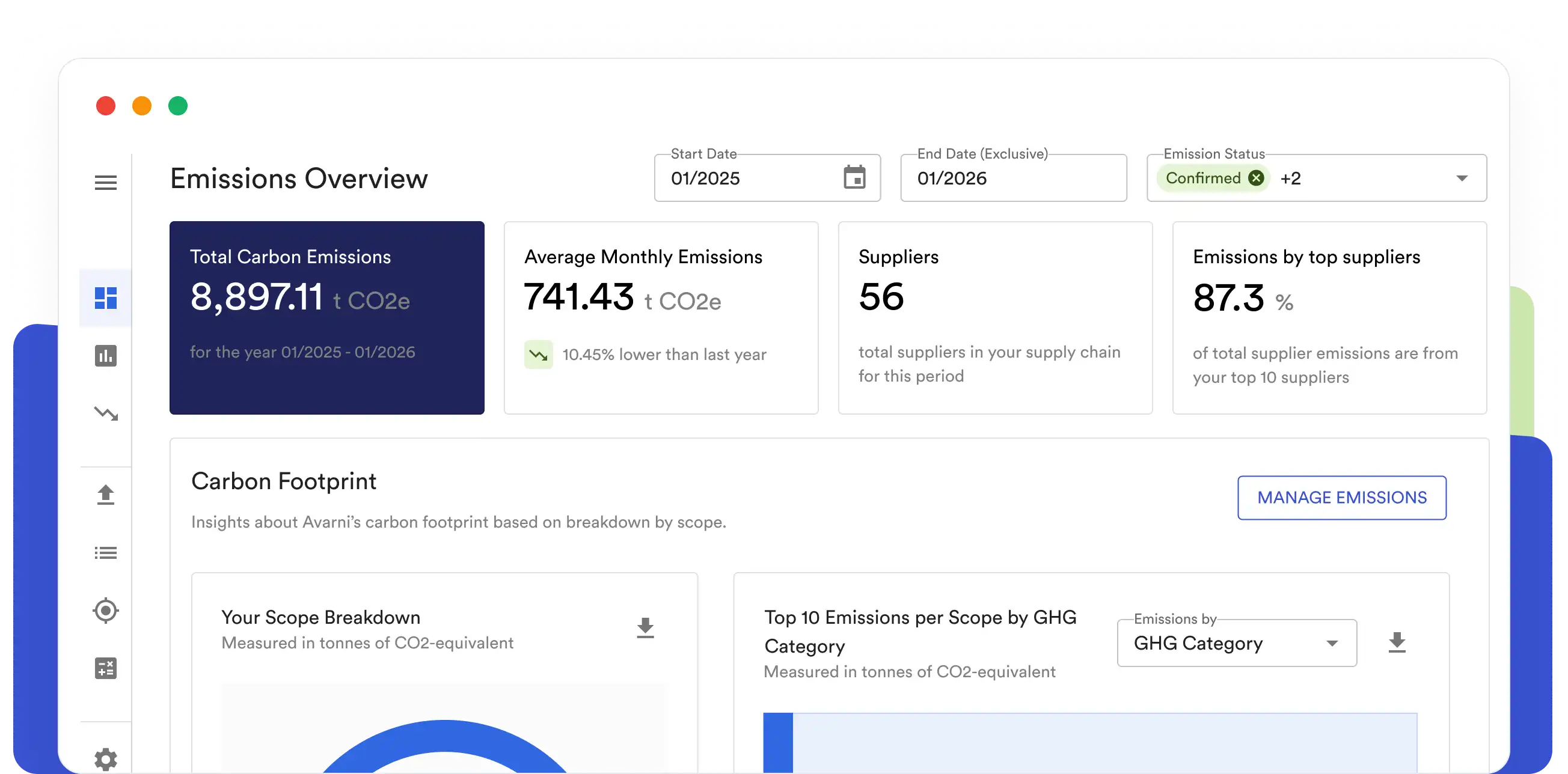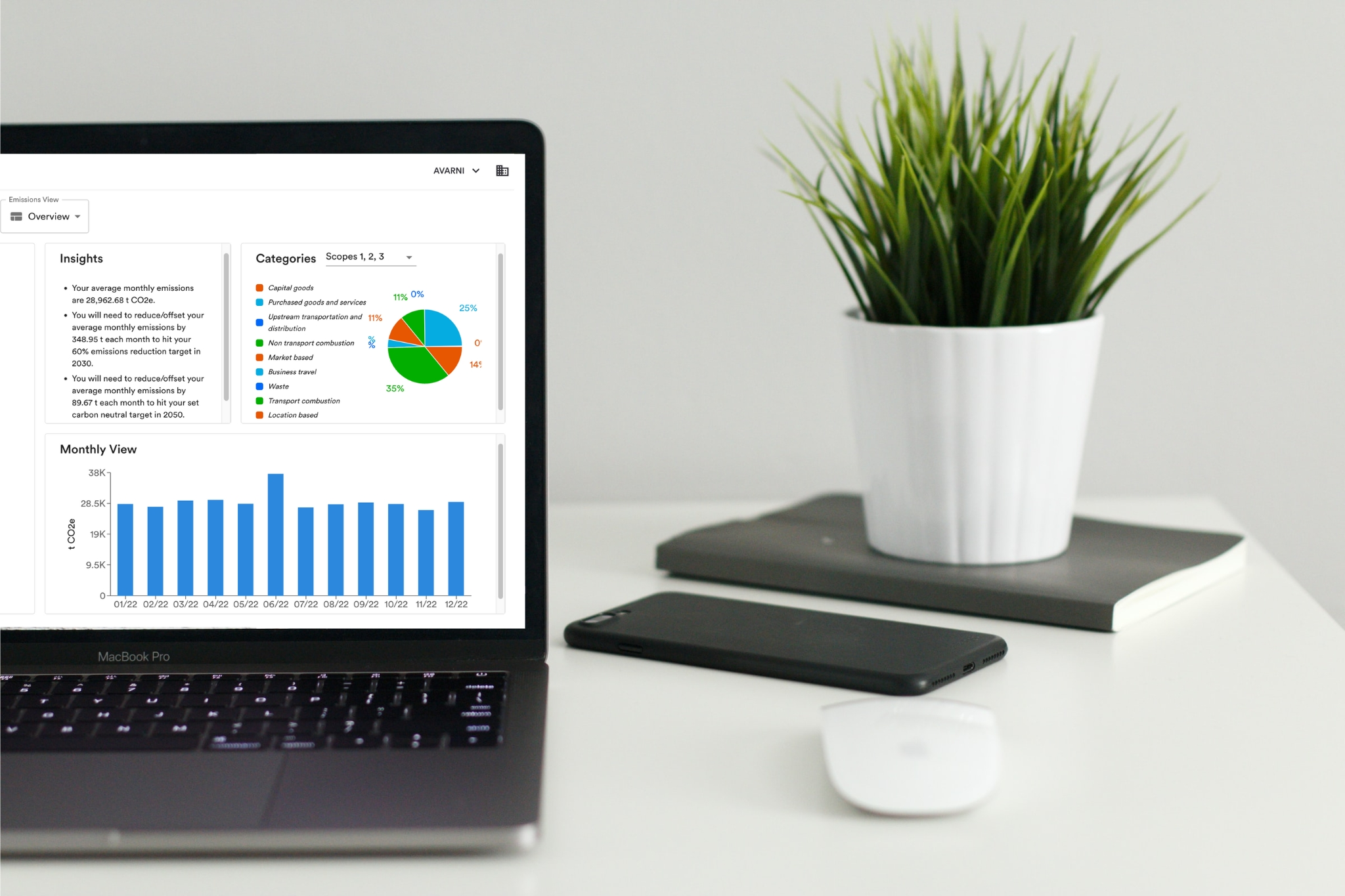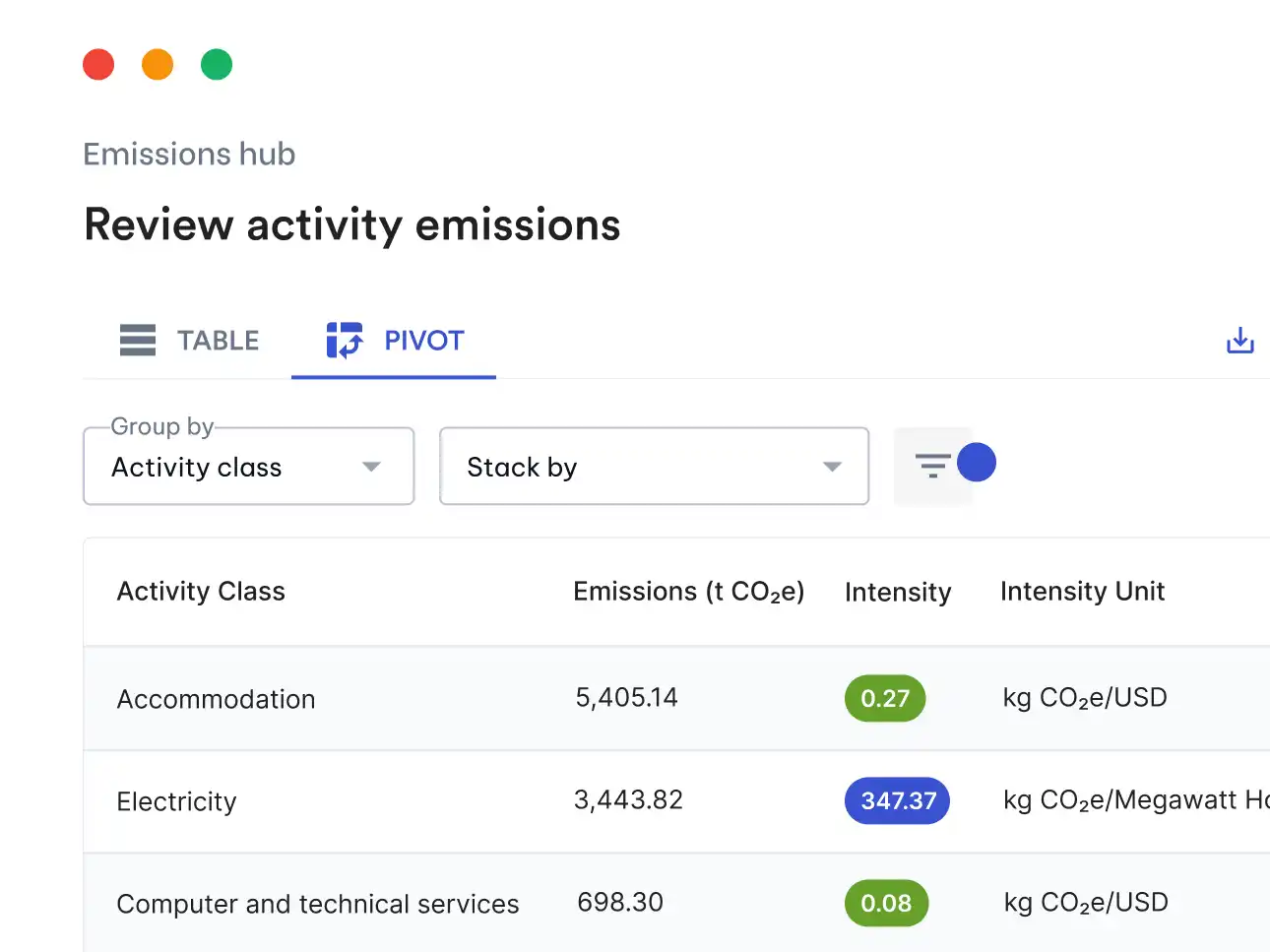As climate disclosure frameworks expand and investor, regulator, and customer expectations rise, selecting the right carbon management software is a business-critical decision. The right platform will save time, reduce errors, and equip your organisation with the insights needed to meet both compliance and decarbonisation goals.
Here are the key factors to consider when evaluating carbon management software in 2025.
1. Flexible, automated data ingestion
Look for software that can handle multiple data sources — finance systems, procurement platforms, invoices, and utility bills — and normalise that information into a usable format. Manual entry should be minimised through automation, and templates or repeatable processes should be available to save time for recurring uploads.
2. Strong data analysis and error detection
Emissions data sets can be huge and complex. Your chosen platform should allow you to slice, dice, and visualise the data to identify anomalies, track outliers, and quickly drill down into the sources of unusual results. This helps ensure your reporting is both accurate and credible.
3. Auditability and workflow control
Given the rise in mandatory reporting standards, the software you choose should maintain a complete audit trail of edits and updates. Bulk editing features and full logging are essential to streamline workflows while remaining compliant with assurance requirements.
Equally important: the platform shouldn’t be a black box. You should always be able to see exactly which emission factor database has been applied to each data point, understand how the calculation was made, and, if needed, override it with a different factor. That transparency ensures confidence in the outputs and gives you control over the assumptions driving your inventory.
4. Comprehensive scope 1–3 coverage
Scope 3 emissions are the largest and most difficult part of most companies’ carbon footprint. Your software must cover all 15 categories of Scope 3 and allow you to engage suppliers directly to fill data gaps, rather than relying solely on spend-based averages.
5. Supplier engagement and collaboration
Collecting accurate Scope 3 data requires active participation from your suppliers. Look for software that goes beyond internal reporting and enables direct engagement with vendors. The right solution should make it simple for suppliers to submit their own emissions data, receive guidance on improvements, and align their reduction plans with your organization’s goals.
Strong supplier engagement capabilities not only improve data quality but also foster collaboration across the value chain, turning reporting into a partnership for real emissions reduction.
6. Supply chain and SBTi tracking
As value chain transparency becomes central to climate accountability, being able to monitor supplier science-based targets (SBTi) is increasingly important. Choose a solution that integrates directly with the SBTi database or provides real-time visibility into supplier progress.
7. Forecasting and scenario modeling
Carbon management is not just about reporting the past. Look for tools that let you model future scenarios, forecast emissions trajectories, and compare the outcomes of different decarbonisation strategies. This capability will be critical for long-term planning and alignment with corporate targets.
8. Regulatory compliance across jurisdictions
From the EU’s CSRD to Australia’s ASRS, regulations are evolving quickly. Your platform should map data to all major global frameworks — GHG Protocol, TCFD, ISSB, CDP, GRI — and support structured, audit-ready reporting for both local and international requirements.
9. Seamless integrations
Software should plug into your existing ecosystem — ERP, procurement, accounting, and business intelligence platforms — so you can avoid data silos and reduce manual work. Look for breadth and depth of integrations to future-proof your system.
10. Enterprise-grade security
Carbon data often intersects with sensitive financial and supply chain information. Any provider you consider should meet the highest security standards, including SOC 2 and ISO 27001 certification.
11. Expert support and resources
Finally, ensure your chosen vendor offers strong implementation support, guidance, and educational resources to make the platform effective for your entire team. Carbon accounting is a complex space, and expert assistance is invaluable.

How Avarni helps you go further
At Avarni, we’ve built our platform around these exact needs — helping consultants and enterprises move beyond spreadsheets to achieve scalable, auditable, and actionable carbon management. Avarni makes it easy to:
Import and transform your emissions data
- AI-powered invoice and bill extraction to eliminate manual entry.
- Methods-based uploads that speed up recurring data ingestion by up to 80%.
- Pivot tables and charts for spotting anomalies in complex datasets.
- Bulk editing with full audit trails for efficient, compliant workflows.
- AI-powered carbon accounting: automatically map raw data to the right emission factors and calculation methodologies, reducing manual work and ensuring consistency.
- Full scope 1–3 coverage to ensure nothing is missed in your inventory
- Comprehensive compliance with ISSB, CSRD, ASRS, TCFD, CDP, GRI, and more.
Access accurate emission factors
- Transparent factor selection: always see which emissions factor library is applied, with the option to override if needed — no black box.
Accelerate supplier engagement
- Supplier engagement tools that make it easy for vendors to share their own data and collaborate on reductions.
Set emissions targets and analyse scenarios
- SBTi tracking, synced weekly to the official database, across your supply chain.
- Forecasting and scenario modelling to plan decarbonisation pathways.
Create compliance-ready emissions reports
- Generate structured, audit-ready reports aligned with global standards.
- Maintain a full audit trail of all edits and calculations.
- Export reports for assurance review with complete transparency.
- 1,000+ integrations with ERP, finance, and procurement systems.
With Avarni, you don’t just choose carbon management software, you unlock a partner that helps you focus less on spreadsheets and more on strategy, resilience, and real emissions reductions. Get in touch with us today to see how Avarni can support your organisation’s sustainability journey.
Article originally published on January 23, 2023. Updated for 2025.





